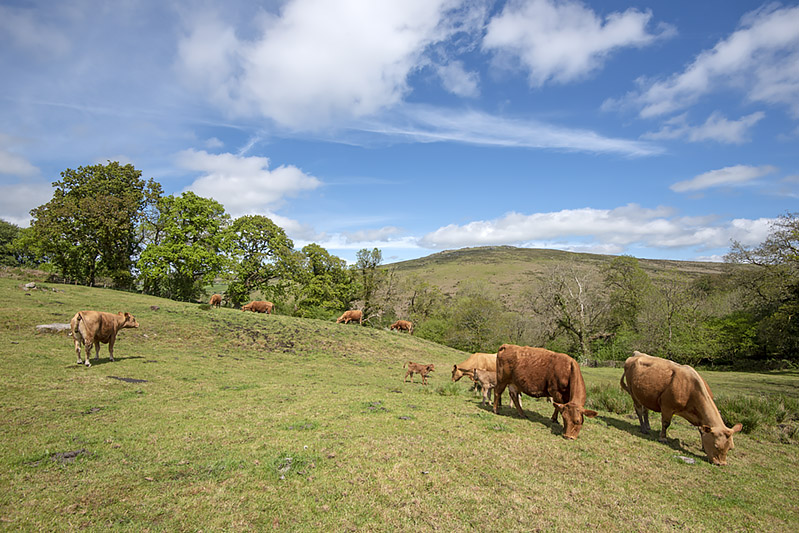Digging into Regenerative Agriculture
A model of de-intensification for humans too!
Ever since I co-founded an organic farm in 1990, I’ve tried to stay aware of trends in sustainable farming. The latest is regenerative agriculture: there’s a lot of hype and froth around this, so I recently visited two farms who are doing it for real.
One is a 400-acre farm on middling-quality soil in Somerset, with a herd of 120 milking cows plus beef calves. One of its main regenerative features is herbal leys (pasture fields) with rotational grazing. A herbal ley has more diverse plant varieties than regular grass leys, which makes it potentially more resilient to severe weather, and more nutritious for the grazing animals.
You could say that an implicit feature of regenerative agriculture (RA) is adaptation to climate change. In farming, maintaining continuous soil cover is an important adaptation strategy, to avoid serious soil loss in torrential rain. Herbal leys can flourish for several years or longer without the need to disrupt the soil by ploughing, and they sequester carbon and nitrogen from the atmosphere..
An impressive feature of this farm is that all the feed is forage-based, i.e. it all comes from the herbal leys, with no use of soya, palm oil or grains. Some fields are cut to provide winter fodder.
Rotational and mob grazing have become much talked about, but I’d never seen them in action. On this farm, a dense number of animals graze a limited area for half a day, and are then moved on. Only a week later, the grass is quite high again. It seems that this method promotes plant growth and deep roots, so the leys are also resilient to long droughts.
Regeneration in the uplands
My other visit was Brimpts Farm on Dartmoor, whose main enterprise on its 700 upland acres is beef cattle. The soil at Brimpts is thin and unfertile – across the valley, it’s just bracken and moorland. Conventional agriculture on this land would mean pushing the grass pasture growth with artificial fertiliser which pollutes the soil and depletes its resilience, using herbicide to suppress weeds, maximising livestock density, and feeding expensive grains like wheat in the winter.

Andy, the farmer at Brimpts, told me, “The key to regeneration here is to de-intensify the system.” This means fewer cattle per acre, which allows diverse plants like yellow rattle to regenerate naturally. The pastures are more resilient to drought, and the cattle are grass-fed all year, hence no imported wheat onto the farm. Fertility is renewed by composting: in winter the cattle have deep straw beds which mix with their dung, and this converts to compost which is spread on the pastures as natural fertiliser.
Learning for humans
The need for generation is pressing for people, both individuals and in depleted systems like the NHS. Here are a few ways that humans can learn from RA:
- Both of these farmers have stopped pushing for maximum output, and are living within their own resources (i.e. all feed grown on the farm). This de-intensified, more self-sufficient approach could help a lot of people and organisations.
- We humans need to cultivate the right support resources, and know how to use them sustainably: that’s the parallel I see with herbal leys and rotational grazing.
- Composting waste for future fertility is basic to organic systems, and we humans need to ‘compost’ our stress, fears and failures more than ever.
- On both farms, there is a conscious trade-off: lower density of animals means lower revenue, but there are major savings on input costs (fertiliser, imported feed), and a premium for organic outputs. This trade-off for sustainability is a great model for all of us.
For a more comprehensive model of how organic farms and gardens provide a guide to human resilience, see Alan’s Seven Seeds of Natural Happiness.
